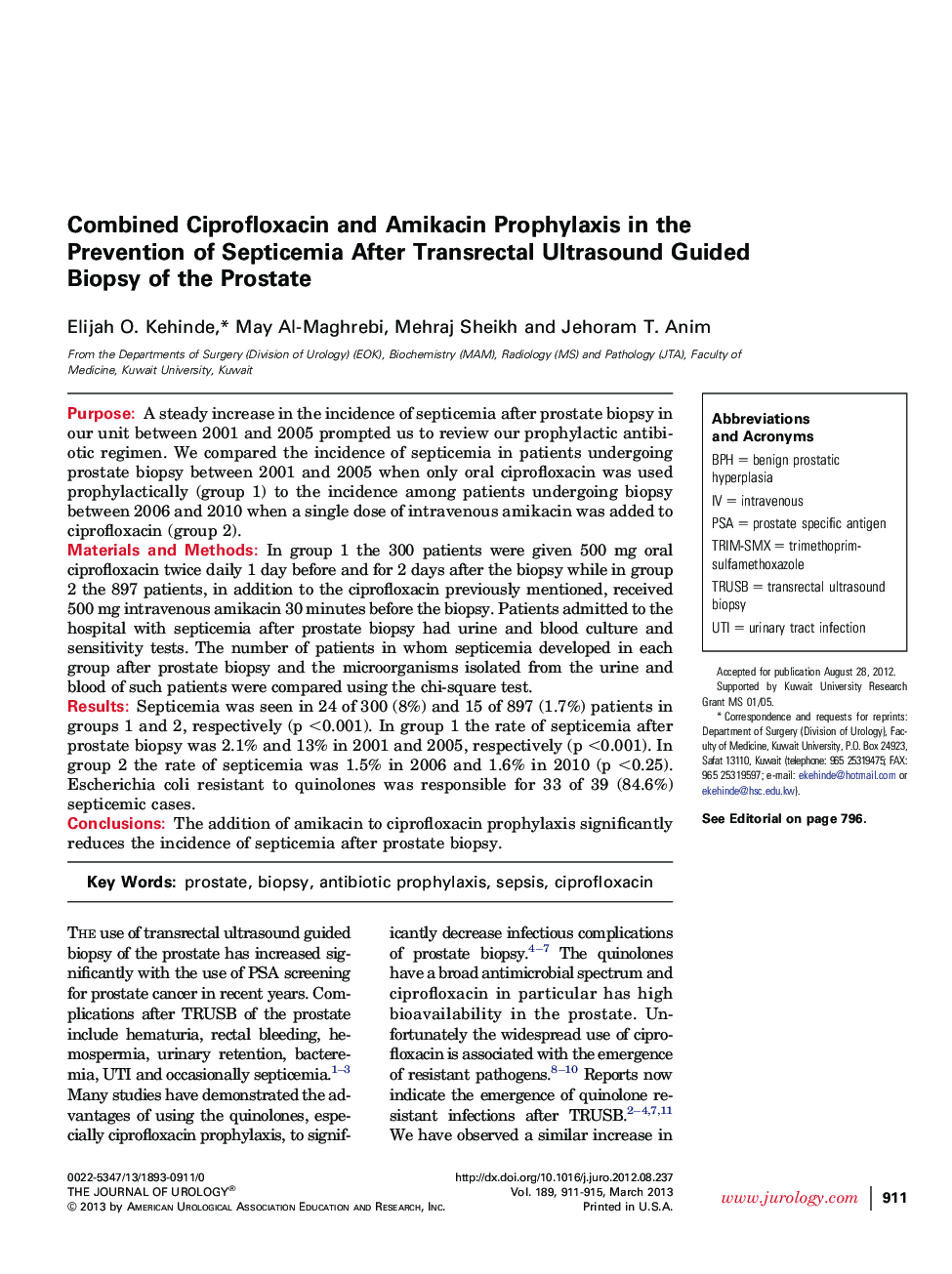| Article ID | Journal | Published Year | Pages | File Type |
|---|---|---|---|---|
| 3864921 | The Journal of Urology | 2013 | 5 Pages |
PurposeA steady increase in the incidence of septicemia after prostate biopsy in our unit between 2001 and 2005 prompted us to review our prophylactic antibiotic regimen. We compared the incidence of septicemia in patients undergoing prostate biopsy between 2001 and 2005 when only oral ciprofloxacin was used prophylactically (group 1) to the incidence among patients undergoing biopsy between 2006 and 2010 when a single dose of intravenous amikacin was added to ciprofloxacin (group 2).Materials and MethodsIn group 1 the 300 patients were given 500 mg oral ciprofloxacin twice daily 1 day before and for 2 days after the biopsy while in group 2 the 897 patients, in addition to the ciprofloxacin previously mentioned, received 500 mg intravenous amikacin 30 minutes before the biopsy. Patients admitted to the hospital with septicemia after prostate biopsy had urine and blood culture and sensitivity tests. The number of patients in whom septicemia developed in each group after prostate biopsy and the microorganisms isolated from the urine and blood of such patients were compared using the chi-square test.ResultsSepticemia was seen in 24 of 300 (8%) and 15 of 897 (1.7%) patients in groups 1 and 2, respectively (p <0.001). In group 1 the rate of septicemia after prostate biopsy was 2.1% and 13% in 2001 and 2005, respectively (p <0.001). In group 2 the rate of septicemia was 1.5% in 2006 and 1.6% in 2010 (p <0.25). Escherichia coli resistant to quinolones was responsible for 33 of 39 (84.6%) septicemic cases.ConclusionsThe addition of amikacin to ciprofloxacin prophylaxis significantly reduces the incidence of septicemia after prostate biopsy.
